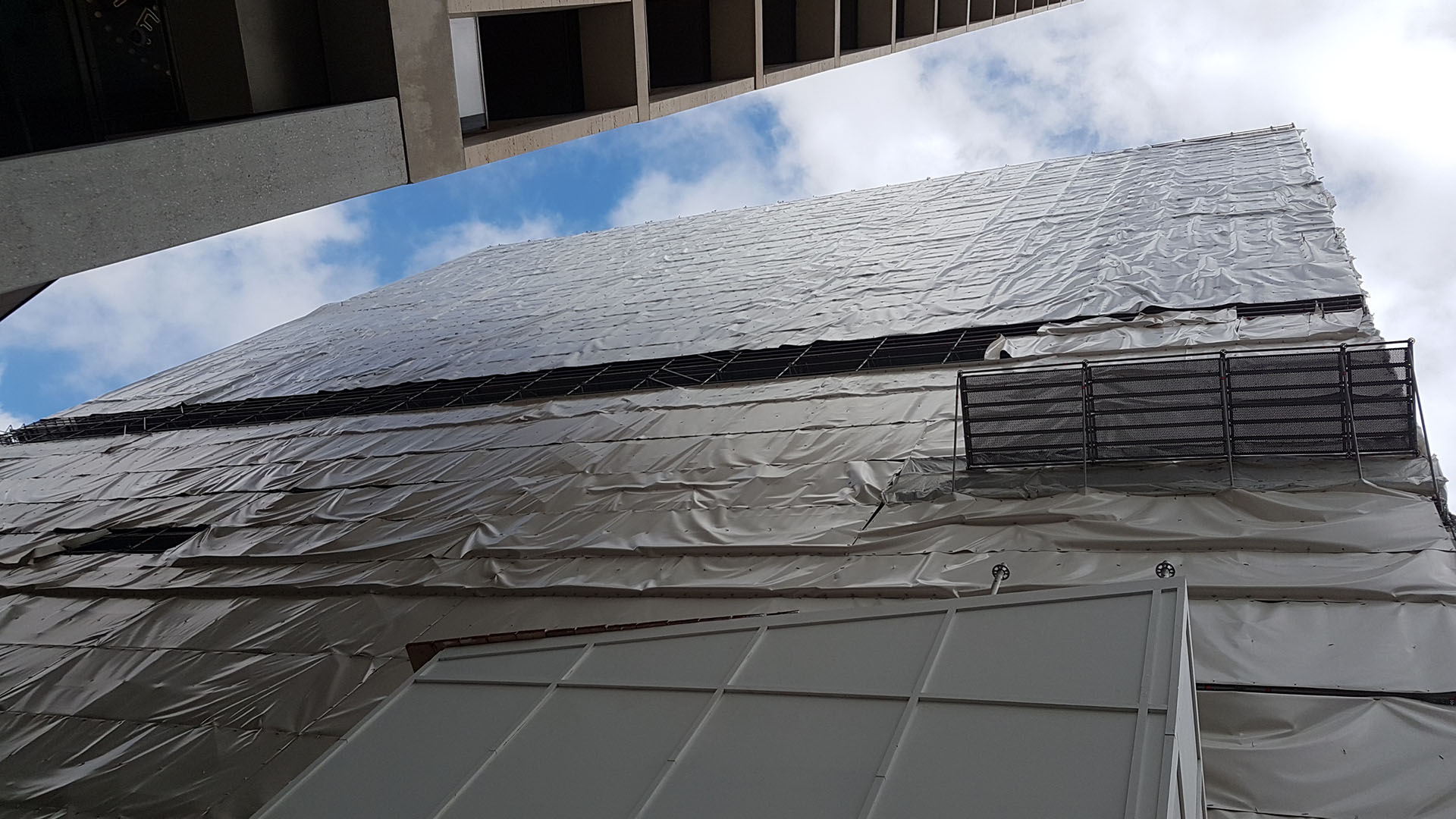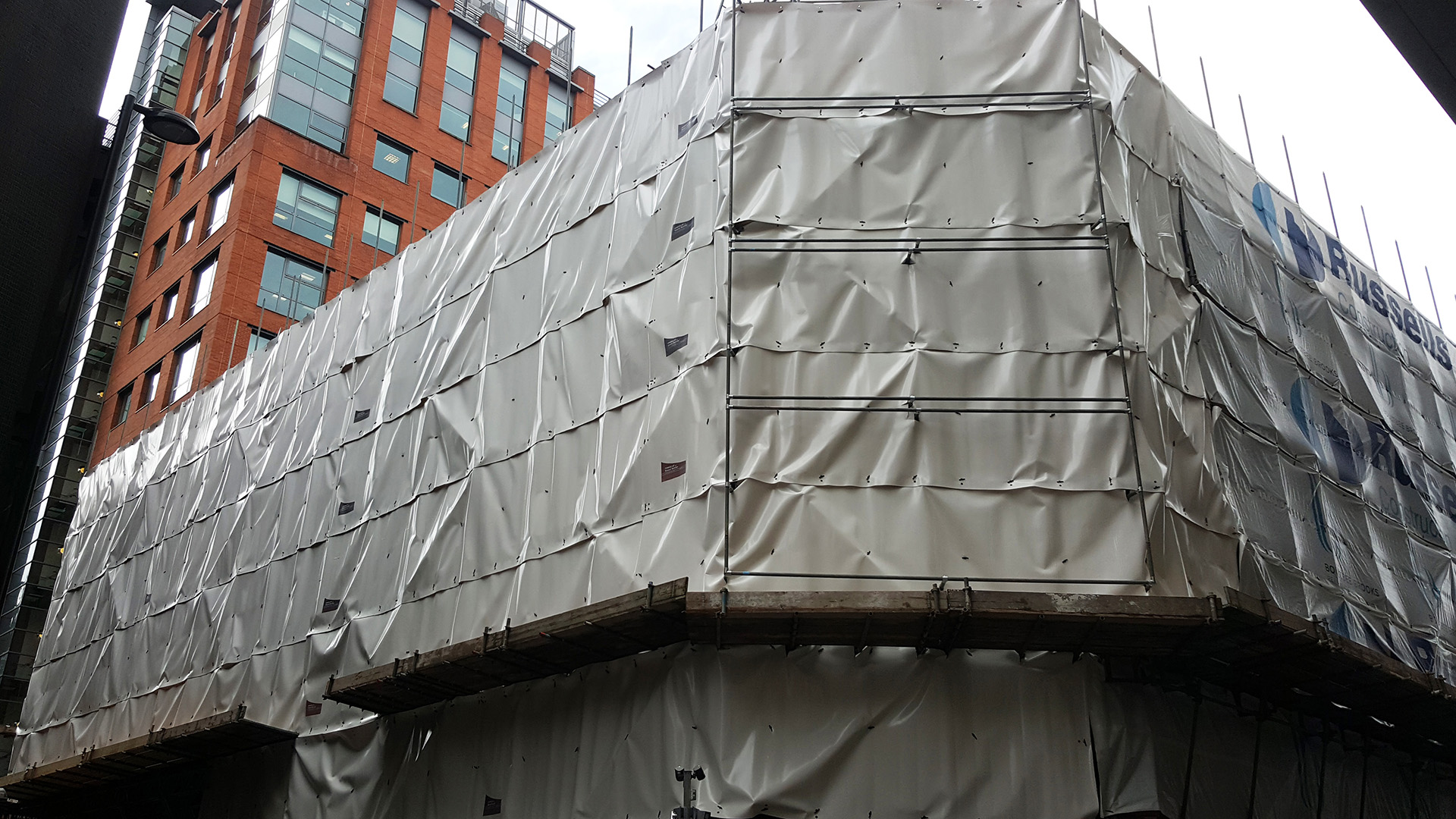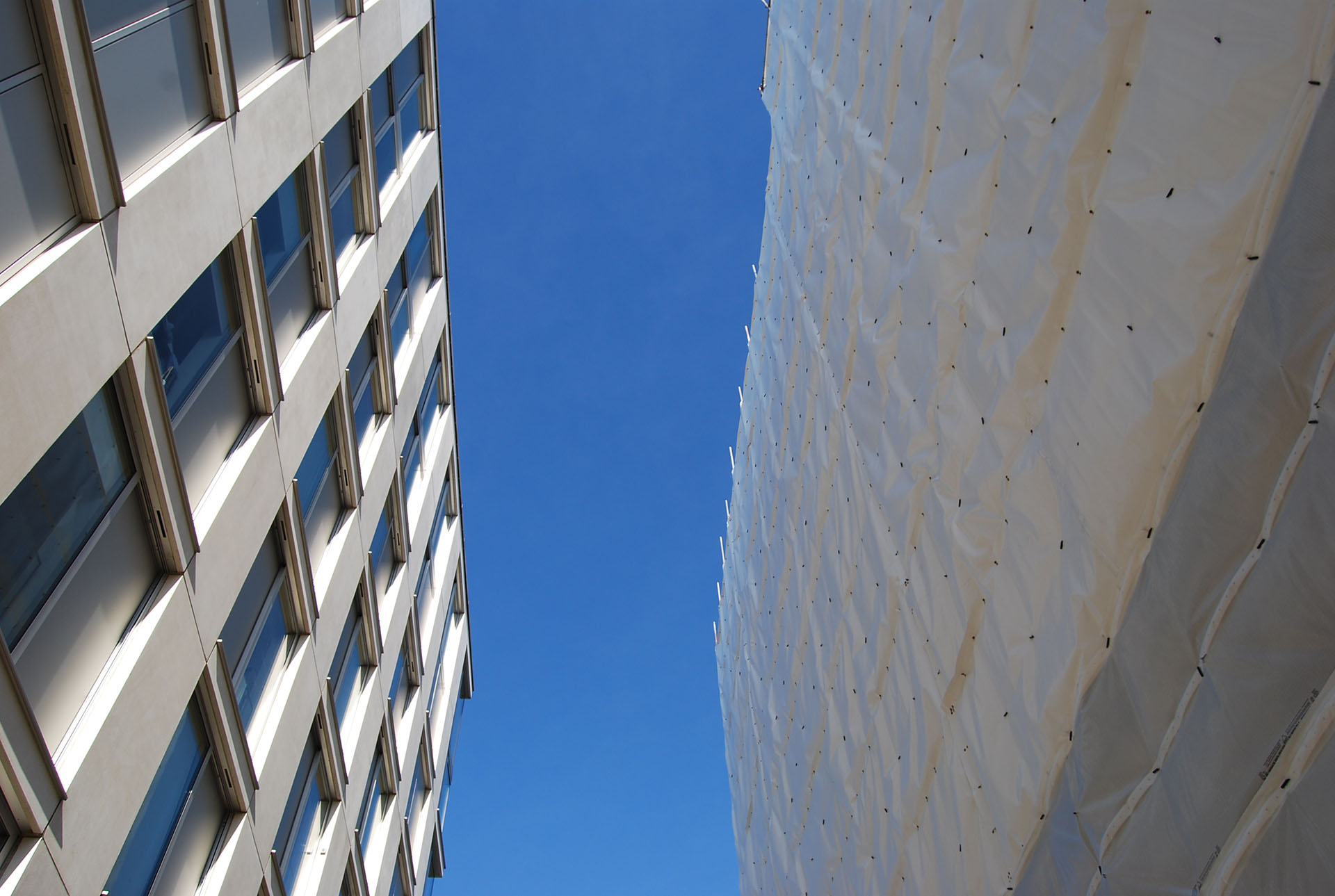Guidance for noise reduction and control on construction sites

Guidance for noise reduction and control on construction sites
Local authorities and contractors have become increasingly conscious of the noise impact of development work in city centres, leading to the widespread adoption of scaffold solutions designed to control and contain sound.
In recent years, apartment developments have been meeting rising demand for urban living in city centres across the UK. Many high-rise buildings are undergoing cladding replacement to comply with post-Grenfell building regulations, adding to the intensity of activity. Current regulations do not specify noise control by law, but many planning and construction professionals are taking the lead with measures to minimise noise pollution. Such measures are commonplace for companies signed up to the Considerate Constructors Scheme (CCS), an independent, non-profit organisation that aims to encourage best practice in the industry beyond statutory requirements.
Typical noise levels on construction sites
Normally, the human ear can hear sounds ranging from 0 decibels (dB) to 140 dB. Above 80 dB, hearing damage can occur depending on the length of exposure; sounds above 120 dB can be painful as well as dangerously damaging. Many items of construction equipment produce noise well above the threshold of risk. Hand-held power tools and circular saws emit almost 100 dB, jackhammers and bulldozers generate over 100 dB, and earth drilling equipment typically exceeds 120 dB.
Urban sites are often noise-sensitive locations, especially where high-rise buildings are in close proximity—a common condition in many of the recladding projects currently taking place in city centres. Where two elevations are spaced a short distance apart, responsible construction should consider the occupants of adjacent offices or residential buildings. It is helpful to conduct an environmental noise assessment that accounts for local conditions and activities, the position of nearby buildings, and the construction methods planned over the project timeline. That assessment can determine whether scaffold protection and containment systems should include acoustic barrier material to reduce the impact of sound and improve the construction work environment.
Noise attenuation is achieved using an acoustic barrier material that both reduces and absorbs sound. Installing the barrier as close as possible to the noise source maximises the sheltered area. A reduction of at least 10 dB is required to be perceived as making a significant difference to noise levels.
Testing requirements
To meet the sound barrier performance required by local authorities and contractors, scaffold sheeting should be independently tested to BS EN ISO 10140-2:2010—the International Standard for Measurement of Airborne Sound Insulation of Building Elements. It is essential to confirm that a sheeting manufacturer can demonstrate the necessary independent testing.
For example, ITP’s product tests were conducted by the College of Science and Technology’s Acoustic Testing Laboratory at the University of Salford. The tests evaluated the acoustic performance of our products in comparison with two popular acoustic curtains and an acoustic insulated sheeting material, all in a controlled, like-for-like installation setting. The testing suite was designed to replicate real-life installation as closely as possible, assessing materials in conditions reflecting normal use.
In tightly packed and busy city centre sites with high footfall, it is beneficial to use more lightweight materials that are easier to transport and quicker to install – provided the sheeting still offers robust and durable performance. In a post-Grenfell high-rise construction sector, flame retardancy is also considered an important safety attribute.
In most city centre developments, noise reduction capability, ease of installation, and fire safety are all highly desirable. Scaffold contractors that are able to offer a combination of these attributes in their solutions are well placed to secure business in city centre developments, refurbishments, and renovations.

Powerclad Sound Barrier sheeting
Offering an acoustic performance sound reduction of up to 16 dB, ITP’s Powerclad Sound Barrier sheeting is used to minimise noise pollution and environmental impact, while also providing waterproof protection, excellent heat retention, and flame retardancy to BS 476 Part 12C
The sheeting is robust yet around 40% lighter than heavy, unwieldy acoustic curtain panels, providing the ideal combination of strength, durability and easy transportation/installation.
For further information, please click here or contact our Building Team on 01347 825200 / info@itpltd.com
